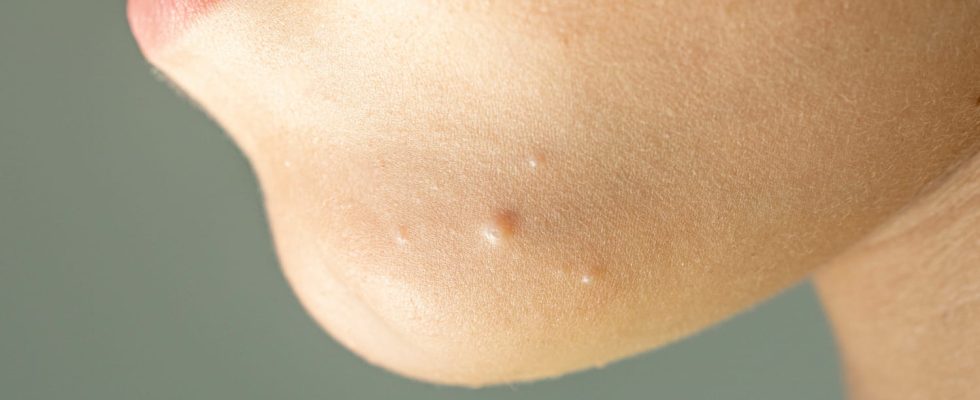The molluscum pendulum (soft fibroid or acrochordon) is a small growth of skin that can be unsightly or even painful if scratched. Should it be removed or not? What are the treatments to cure it?
The molluscum pendulum is a skin growth which is usually mild. It would seem that this skin tumor be of viral origin. THE symptoms are mainly cutaneous. What is a molluscum pendulum? What are the causes ? What treatments to treat a molluscum pendulum?
Definition: what is a molluscum pendulum?
The molluscum pendulum, also called “soft fibroid“, is a fairly common benign tumor or “acrochordon” of the skin. It comes in the form of a small growth connected to the skin by a thin pedicle. These little bits of flesh usually appear around the neck, at the folds of the body such as the fold of the groin or in the armpits, more rarely on eyelids. Their size is generally of the order of a few millimeters, rarely beyond a centimeter. Their number increases with age. “However, these are not dangerous lesions and they do not require intervention unless they grow too large”reassures Dr. Paul Dupont, dermatologist.
What are the symptoms of a molluscum pendulum?
The molluscum pendulum is manifested by soft, flesh-colored, or hyperpigmented lesions, their color ranging from that of normal skin to dark brown. It is usually not painful, but can be unsightly or become bothersome. This growth can indeedto take” in clothing or jewelry. She can also to spontaneously thrombose or after a trauma: it then becomes red and painful, then black (necrosis) and falls off on its own.
“Their cause is not well known. We can think, given their progression from one to the next, that the mollusca pendula can have a viral cause”, explains the dermatologist.
A molluscum pendulum is quite characteristic and easily recognizable. A clinical examination is therefore usually enough to diagnose it. If in doubt, the dermatologist can extract it under local anesthesia to have it analyzed.
What treatment for molluscum contagiosum?
If the lesions are asymptomatic, no treatment is necessary. When they become bothersome or unsightly, it is possible to remove them, either by destroying them with liquid nitrogen (cryotherapy), either by sectioning them at the level of their pedicle with a scalpel or electrocoagulation. This surgical procedure is quick and requires at most a small local anesthesia. Unlike liquid nitrogen, it leaves no traces, provided you stay out of direct sunlight. Better to have them removed in the fall or winter. “On the natural treatment side, we can use certain essential oils such as Melaleuque or Juniper diluted in a liniment”suggests the specialist.
Thanks to Dr. Paul Dupont, dermatologist.
